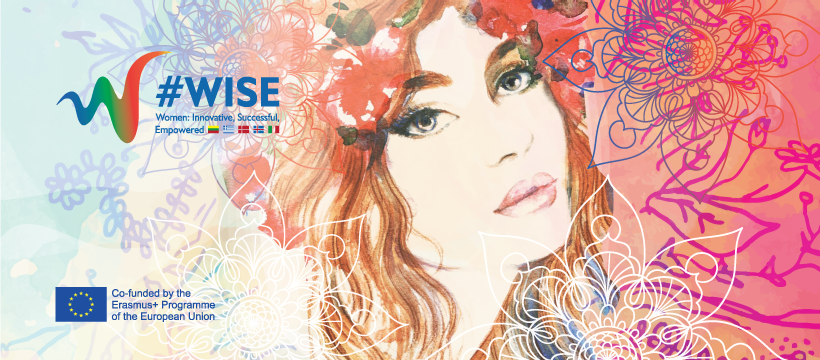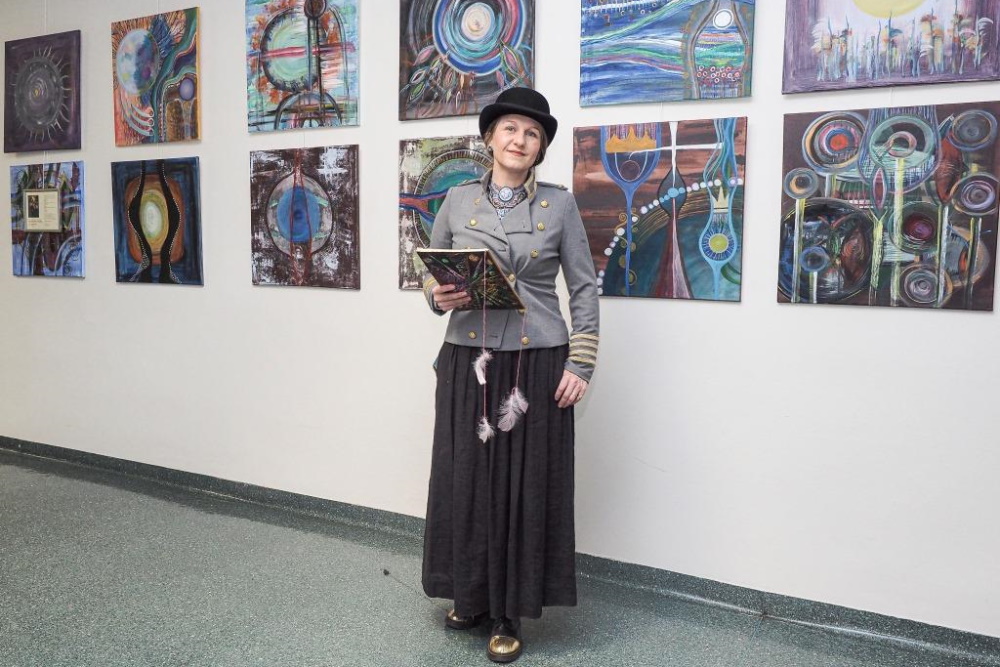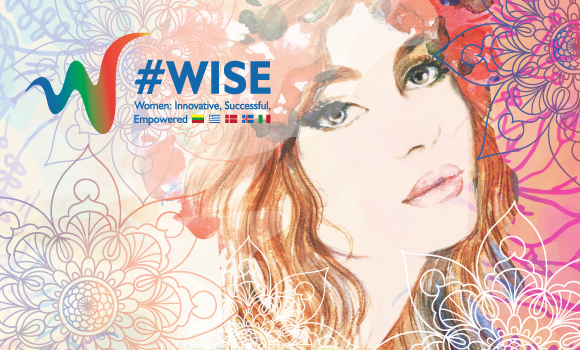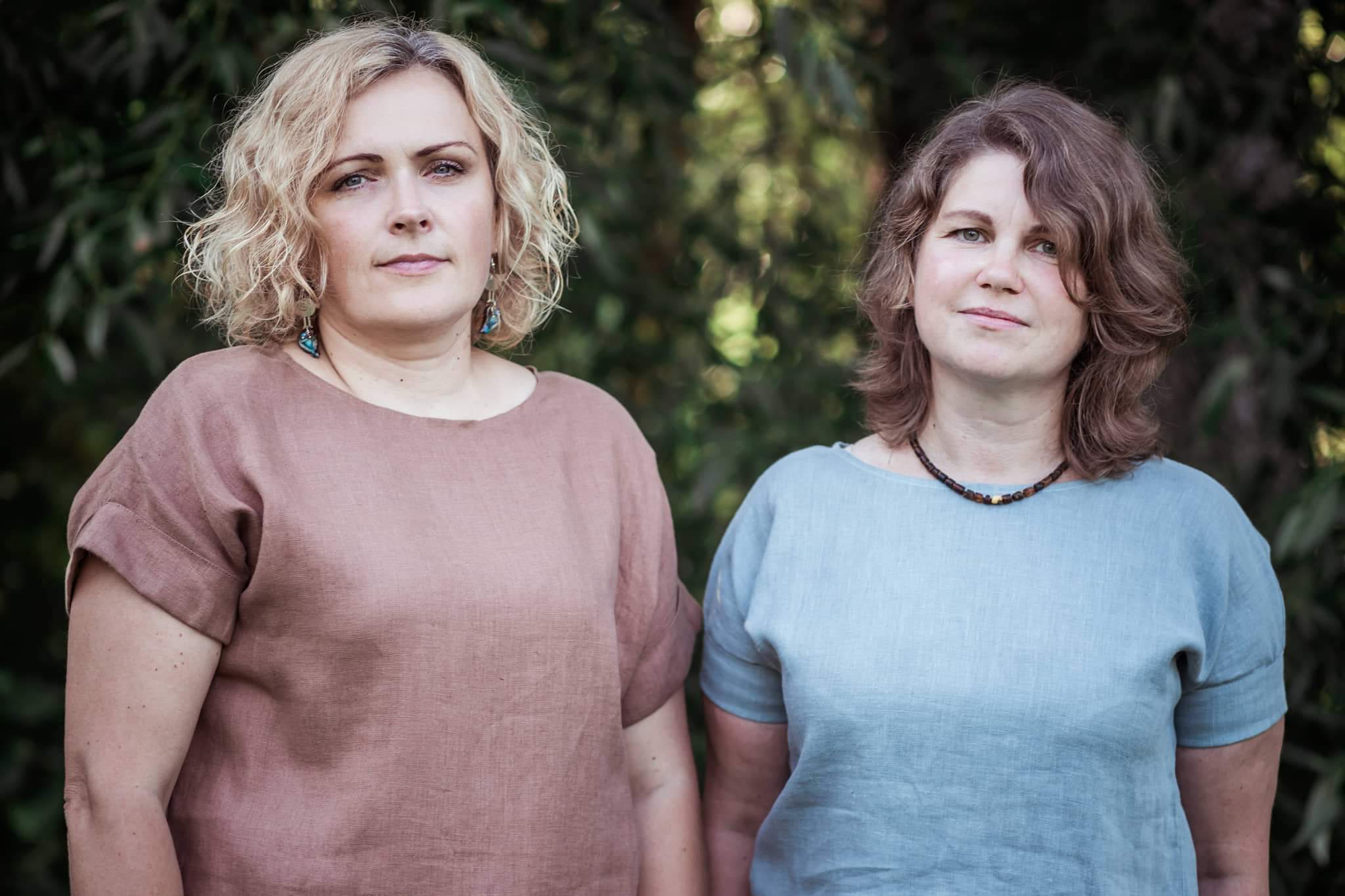An hour with a brush and paint, even though you’ve never drawn. Transferring emotions and feelings to the canvas without following any painting rules. Speaking in colors when thoughts cannot be expressed in words. All this is art therapy, which is extremely relevant for oncology patients facing psychological challenges. According to psychiatrists, art therapy, which works beyond words, can help overcome even the darkest periods of life.
The Lithuanian artist Lina Magdalena Buje did not practice art therapy in the past, but she taught children to draw. So, the desire to grab a brush and play with paint arose spontaneously. The first series of surreal birds was born back in 2007 after a very difficult loss.
“My child was sleeping. There was paint on the table, so I thought maybe I should draw something. At that time, I had not heard anything about art therapy, that it is a method that can help a person deal with feelings, and express them. My first works were not intended for the viewer. It was a manifestation of my experiences,” says L.M. Buje about the beginning of her journey as an artist.
26 spiritual experiences
About eight years ago, L.M. Buje began to participate in a continuous year-long series of art therapy seminars with other women.
“We studied all topics through personal experience, it was not just theory, but practice. It was a very meaningful trip. This is how I got to know the art therapy methods more closely. Paints, various materials, clay, sand, and other tools were used to help achieve the set goals. The knowledge I gained later came in handy when communicating with some children and adults,” says L.M. Buje about her introduction to art therapy.
My first works were not intended for the viewer. It was a manifestation of my experiences.
The brush ended up in the woman’s hands more and more often. “In the fall, my exhibition opened at the National Cancer Institute, next to the chapel, a place where one goes in search of comfort or hope. Therefore, they wanted the empty walls to become colorful, and the works were exhibited as a mosaic. I deliberately didn’t put titles on the works so that people wouldn’t get attached to them. Everyone sees something special. When a group of friends visited the exhibition, each of them had different associations with the same works. I would list the job titles to them and they would guess which job I was talking about. Don’t want to stick labels. The exhibition “Journey through the desert” consists of 26 works,” the artist explained about her exhibition at NCI.
L.M. Buje says that the aim of the exhibition is not to surprise the viewer. “A person undergoing treatment cannot go somewhere all the time, for example to a gallery, exhibition, or event. Sometimes, when he comes for chemotherapy or radiation therapy, he simply does not have the strength for it. Maybe there is no desire to go somewhere. Therefore, we want the exhibition to come to the patient”, the artist confesses.
Every person goes through a unique journey through the desert, whether it is an illness, or the loss of a loved one, an internal crisis, or life’s challenges. We all experience our deserts at different stages of life with unique challenges and we try to overcome them. In the exhibited series of works, I share with the patient what kind of journey I experienced through the desert. I want a person to see that there is always hope and that the patient is not alone in the journey through the desert,” the artist says.
In the exhibited series of works, I share with the patient what kind of journey I experienced through the desert. I want a person to see that there is always hope and that the patient is not alone in the journey through the desert.
The painter explains that she has transferred her emotional and spiritual experience into 26 of her works. Therefore, the themes of the works differ, depending on the inner experiences.
“This is a neuro graphic art, an experience of neuroeducation classes. I learned about neuroeducation, emotionally mature spirituality, and body-spirit-soul connections. I participated in retreats, and Christian meditation, and I read the Holy Scriptures, I was interested in how the Holy Scriptures can invite a person to be with himself. After such a stay, I would take a brush and paint. The experience of the retreat transferred to my workshop, I would come up with a task and transfer the feeling to the canvas”, the artist says.
Art without rules
The titles of L. M. Buje’s canvases are very diverse, from feelings to states. It wasn’t just a trip, because neuro-graphic art is not meant to surprise or shock the viewer. ‘Neuro-graphic art is intended specifically for the author, who could give meaning to his feeling or the feeling he wants to experience,” L.M. Buje says about how the works of art were born.
The artist is convinced that painting helps to express accumulated and untold emotions, and helps to deal with negative feelings. According to L.M. Buje, art therapy can be an excellent way of expressing emotions for both adults and children.
“I painted a lot of different works. Some very quickly, others slowly. I put several canvases on top, I didn’t like something… Therefore, I gave the same canvas a revival. In our childhood, we were not taught how to express emotions safely. Education could improve a lot if they taught children how to express emotions and recognize them. In the past, it was common to suppress emotions, and self-control was a value. And after all, in reality, all experiences lie in the heart. And then a person accumulates a baggage of unlived feelings. A person carries it with him and sooner or later, it causes consequences.
And after all, in reality, all experiences lie in the heart. And then a person accumulates a baggage of unlived feelings. A person carries it with him and sooner or later, it causes consequences.
Painting is a very safe method of experiencing what is unlived. It is a psychological act, touching the wounds of the past. After all, this is how you can treat children: if the child is angry, you can offer him to “splash” his emotions with paint, offer a larger sheet of paper, or a canvas.
“My artwork, which is intended for the viewer, is like the fruit of my work. However, there are also short-term jobs accompanied by short-term emotions. I destroy those works later. There is a line between art and art therapy. A person who does not know how to paint can help himself even more. When you paint, you need to separate yourself from knowing the painting technique, not thinking about how you painted, or what composition or colors should be.
There are no rules in neuro-graphic art. If the mind is activated, the work changes its purpose,” the artist shares her thoughts.
Since there are no rules in neuro art, L.M. Buje is convinced that anyone can create, because it doesn’t matter if you know how to draw or not. After all, the goal is not to create a work of art. Although sometimes very beautiful works are born during the journey itself.
According to L.M. Buje, people who come to art therapy classes should leave all responsibility and fear to the class leader. After all, his or her task is to introduce people to this journey. And people can only enjoy it.
You don’t have to think that you won’t go just because you can’t draw. After all, even though children cannot read, they still go to school to learn letters. And here we, as adults, say that we will not go somewhere because we cannot afford it.
“Art therapy and the various techniques used in it can help people who are experiencing the spiritual desert and facing psychological problems. This is a way of communication. You can’t lie there. If a person can or cannot name his feelings with words, he cannot manipulate them with strokes.
Moreover, art therapy provides hope for resurrection when a person does something and immediately sees the result. “When he picks up the brush, he leaves a mark on the canvas, the paper, touching the clay in his hands. If a person feels that he is lost somewhere, the visuals reflect that he is here,” the artist sums up.
Illustrations from the personal archive of the interviewee.
Text by Juventa Sartataviciene.





